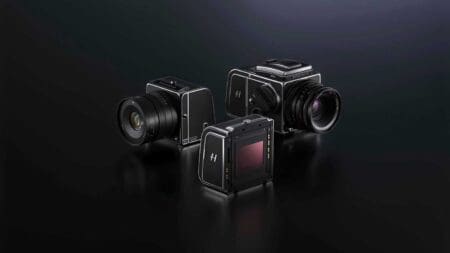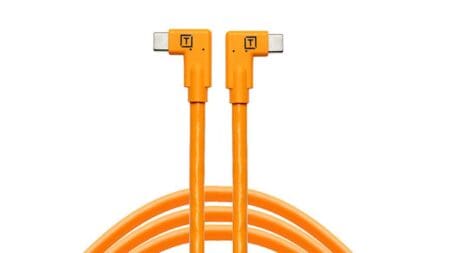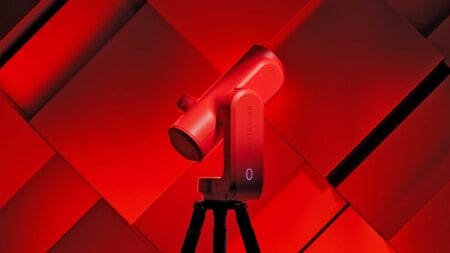The best cameras for sports photography are those that are built for speed, plain and simple. Yes, you need a fast and precise AF system, and features like IBIS are useful for shooting sport. But the most essential element you should be looking for is a camera with a fast frame rate. A solid sports camera needs to be able to capture a lot of frames in rapid succession. This is because the action in most sports is happening so quickly.
Th best cameras for sports photography will not only have a high burst rate, but they’ll also have a high buffer. For those new to shooting sport and action, the buffer is how many shots your camera can take in succession before it needs to cool down.
So equally important to your camera’s frame rate is how fast it can process those files and move on to shoot the next one. Ensuring you purchase a camera with the latest iteration of that manufacturer’s image processing engine will mean you’re getting the most power.
Understanding continuous shooting and buffer capacity
When you’re looking at the maximum continuous frame rate that a camera offers, also check the buffer capacity. A high frame rate may be great, but if your camera locks up for ages after you’ve fired off a few images, it can mean missed shots. So a camera with a slower frame rate but a deeper burst depth may be a better choice.
As an example of what’s possible these days, we recently tested the OM System OM-1, which is down below on our list of the best cameras for sports photography. We were able to capture 50 frames consistently in one go when the number of frames was set to the default of 50. When the number of frames is uncapped, we were able to shoot just over 100 raw files, usually 102-105, in a single blast at 50fps in SH2 mode and 120fps in SH1 mode. At 50fps it takes just 2 seconds to fill the buffer and a little under half that at 120fps.
The best cameras for sports photography you can buy today
Given the cost and otherworldly performance of some of the pro-level cameras, we’ve split our list of the best cameras for sports photography into two with a list for professional models and more affordable options for enthusiasts. If you’re brand new to the genre, check out our guide to the best cameras for beginner sports photography. And don’t miss our extensive range of camera buying guides.
Best affordable cameras for sports photography
Not quite at the level or have the budget to pull the trigger on a pro-level camera? These are our picks for the best affordable cameras for sports photography. Many of these cameras inherit features from the flagship models in their family, which make them perfectly capable of capturing dramatic action.
Nikon Z50
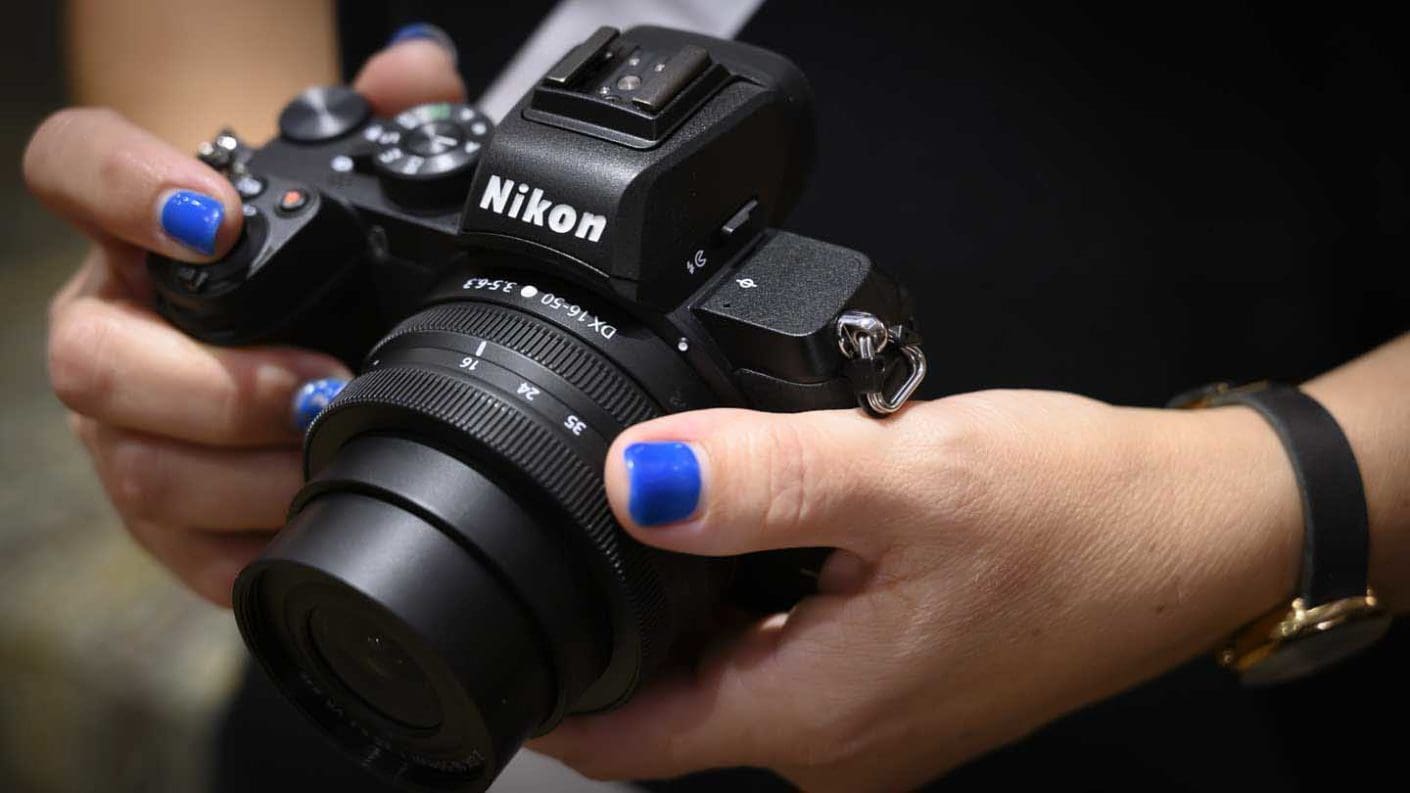
Specification
- Camera type: Mirrorless
- Sensor: 20.88Mp APS-C / DX (23.5x15.7mm) CMOS
- Processing engine: Expeed 6
- Lens mount: Nikon Z mount
- Sensitivity range: ISO 100-51,200; expands to 204,800
- Viewfinder: 0.39-inch 2,360,000-dot OLED electronic viewfinder
- Screen: Tilting 3.2–inch 1,040,000-dot touchscreen
- Autofocus: Hybrid (phase and contrast detection) AF with 209 AF points, Eye AF and Subject Tracking. Firmware V.20 adds Eye-detection AF for Animals as well as humans
- Continuous Shooting: 11fps with continuous AF and exposure metering
- Video: 4K at 30fps and Full-HD at 120fps
- Storage: SD/SDHC/SDXC UHS-I
- Connectivity: Snapbridge 2.6; Wi-Fi, Bluetooth
- Dimensions (W x H x D): 126.5 x 93.5 x 60 mm / 5 x 3.7 x 2.4-inches
- Weight: 450g / 15.9oz with battery and memory card but without body cap, 395g /14oz body only
The Nikon Z6 and Z7 are great, but not all photographers want a full-frame camera. The Nikon Z50 offers that alternative for Nikon users wanting a mirrorless camera, and it has plenty to offer experienced photographers thanks to a solid build and a comprehensive feature set.
Its autofocus system is excellent and is capable of capturing fast-moving subjects in pin-sharp focus, even in gloomy conditions. Further good news is that the Z50 has both Subject Tracking and Eye AF modes. Eye AF is a must-have feature at the moment and it’s incredibly useful for portraits and social event photography.
Subject Tracking works in Auto-area AF mode and it’s useful for subjects that move erratically. Pressing the OK button in Auto-area AF mode activates a tracking point which is visible on the screen and in the viewfinder.
You then position this box over the subject and press the OK button again to start the tracking. As the subject moves, the Z50 tracks it around the frame, keeping it sharp in Continuous AF mode.
Inside the Nikon Z50 is a new 20.88Mp APS-C format sensor which is paired with the Expeed 6 processing engine. Together, these enable a native sensitivity range for stills of ISO 100-51,200 with expansion settings going all the way up to ISO 204,800. Meanwhile, the video range is ISO 100-25,600.
Thanks to the Expeed 6 processing engine, the Z50 can shoot at up to 11 frames per second with continuous autofocusing and exposure metering. This rate is achieved in Continuous High Plus mode while the maximum rate in Continuous High mode is 5fps.
The Nikon Z50 also delivers great video, capturing 4K at 30fps and Full HD at a range of frame rates.
Find the best deals on the Nikon Z50 at Amazon UK and Amazon US.
£849
$989For
- Superb build and handling
- AF fast and accurate in low light
- Weatherproof
Against
- No joystick
- Can't use the screen to set the AF point while you look in the viewfinder
Canon EOS R7

Specification
- Camera type: Mirrorless
- Announced: 24th May 2022
- Sensor: 32.5Mp APS-C format (22.3 x 14.8mm) CMOS
- Processor: Digic X
- Lens mount: Canon RF
- Sensitivity range: ISO 100-32,000 expandable to ISO 51,200
- AF system: Dual Pixel CMOS II AF phase detection with up to 5915 positions and 651 automatically selectable points
- Subject detection and tracking: Humans (Eyes/Face/Head/Body), Animals (Dogs, Cats and Birds) or Vehicles (Racing cars or Motor bikes)
- Viewfinder: 0.39-type 2,360,000-dots OLED EVF
- Screen: Touch-sensitive vari-angle 2.95-inch LCD with 1.62 million dots
- Video resolution: 4K (3840 x 2160) at up to 60p, Full HD: (1920 x 1080) at up to 120p
- Max continuous shooting rate: Mechanical shutter: 15fps for up to 224 Jpegs or 51 raw files, Electronic shutter: 30fps for 126 Jpegs or 42 raw files
- Shutter speed range: Mechanical: 30-1/8000 sec, Bulb, Electronic: 30-1/16000 sec
- Built-in flash: No
- Battery: Li-ion LP-E6N, Viewfinder: Approx. 500 shots Screen: Approx 770 shots
- Dimensions (W x H x D): 132.0 x 90.4 x 91.7mm
- Weight: 612g including battery and memory card
Inside Canon’s new flagship APS-C mirrorless camera is a a 32.5MP sensor that features Dual Pixel CMOS AF II technology, Canon’s most advanced version of its on-sensor phase-detection focusing technology. It’s the same technology as in the full-frame Canon EOS R5, EOS R6 and the headline Canon EOS R3.
This sensor is also paired with Canon’s latest line of processing engines, the Digic X series. This combination enables a maximum continuous shooting rate of 15fps (frames per second) with the mechanical shutter and 30fps with the electronic shutter. Those rates are both possible at full resolution and with full autofocus and metering capability.
In addition, the Canon R7 has intelligent subject detection and tracking, which uses deep learning algorithms to enable the camera to detect and focus on people, animals and vehicles. It uses hierarchical detection, prioritising the eyes (when eye detection is enabled in the menu) the heads then bodies when detecting humans or animals.
As you’d expect, there’s also Touch & Drag AF, which allows you to set the AF point by touching or dragging on the screen with your finger.
The EOS R7 also boasts IBIS, which allows it to correct camera shake across 5 axes for video and stills and offering up to 8EV shutter speed compensation.
£1350
$1499 / €1649.99For
- Phase detection focusing and intelligent subject detection
- 32.5MP APS-C sensor
- Same mount as Canon R3, R5 and R6
Against
- Limited RF-S lens range
- Unique control arrangement
- Lack-lustre viewfinder and screen specification
Sony A6600
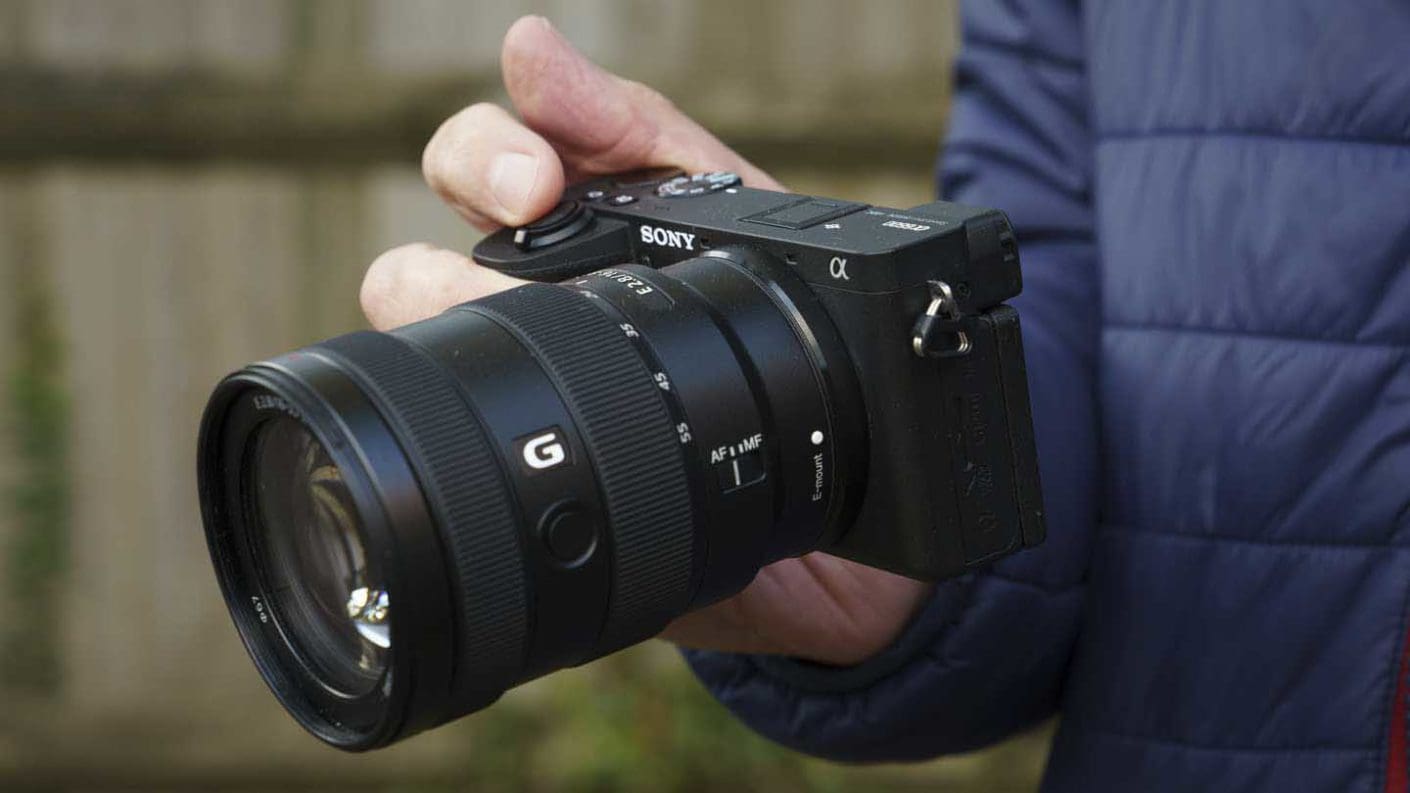
Specification
- Camera type: Mirrorless
- Announced: 28th August 2019
- Lens mount: Sony E
- Sensor: 24.2MP APS-C Exmor CMOS (23.5 x 15.6mm) sensor
- Video: 4K (3840 x 2160) 25/30p video capture with log profiles
- Continuous shooting rate: Hi+: 11fps, Hi: 8fps, Mid: 6fps, Lo: 3fps
- Burst depth: In Hi+ 46 raw files, 99 Extra Fine Jpegs or 44 raw and Jpeg files
- Stabilisation: 5-axis in-body image stabilisation
- Sensitivity: ISO 100-32000 (expandable to ISO 50 – 102400)
- Autofocus : Fast Hybrid AF (phase-detection and contrast-detection each with 425 points), Face Detection and Real-Time Eye AF
- Viewfinder: 0.39-inch 2,359,296-dot OLED electronic viewfinder
- Screen: 3-inch 921,600-dot tilting touchscreen
- Storage: SD/SDHC/SDXC UHS-I or Memory Stick PRO Duo, Memory Stick PRO-HG Duo, Memory Stick Micro (M2)
- Dimensions (W x H x D): 120.0 x 66.9 x 69.3mm / 4 3/4 x 2 3/4 x 2 3/4-inches
- Weight: 503g / 1lb 1.8oz with battery and memory card
The Sony A6600 is Sony’s flagship APS-C format mirrorless camera and it’s aimed at enthusiast photographers and videographers who want to shoot in a variety of conditions. It features a 24.2MP Exmor CMOS image sensor, the BIONZ X image processor and a front-end LSI as is implemented in Sony’s full-frame cameras for better enhancements in still and video image quality.
Among the A6600’s impressive feature set is Sony’s innovative 5-axis in-body image stabilisation system that provides a 5.0-step shutter speed advantage.
The Alpha 6600 also delivers an autofocus acquisition time of just 0.02 seconds, with 425 phase-detection AF points covering approximately 84% of the image area and 425 contrast-detection AF points.
Also on-board is Sony’s ‘Real-time Tracking’ and ‘Real-time Eye AF’, the latest version of Sony’s Eye AF technology, which employs AI-based object recognition to detect and process eye data in real-time.
Real-time Eye AF promises improved accuracy, speed and tracking performance of Eye AF for both humans and animals, and allows the photographer to concentrate exclusively on composition. It’s a significant bonus for pet and portrait photography.
High-resolution internal 4K movie recording with full-pixel readout without pixel binning in Super 35mm format is also on-board. You’ll also find built-in interval shooting for time-lapse videos and a 180-degree tiltable, 3.0-type 921k-dot (approx.) LCD touch screen.
It may not have the same shape as the Sony A7 series of full-frame cameras, but the A 6600 has much of the same technology, enabling it to deliver impressive results with a wide range of subjects.
£1450
€1600For
- Very good image and video quality
- Fast, accurate AF system
- Excellent battery life (800+ shots)
Against
- Poorly positioned video record button
- Little use made of the touch control on the tilting rather than vari-angle screen
- Single SD card slot
Panasonic G9
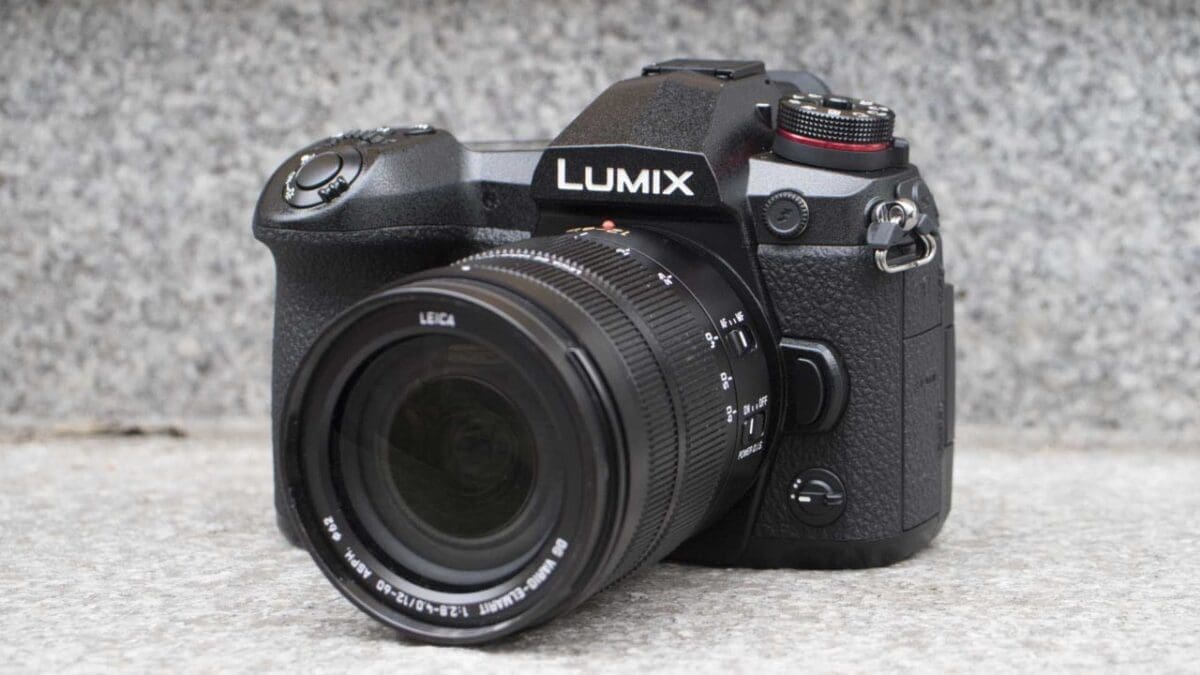
Specification
- Burst Mode (electronic shutter): 20fps with C-AF
- Burst Mode (electronic shutter): 60fps with S-AF
- Burst Mode (mechanical shutter): 9fps with C-AF
- Burst Mode (mechanical shutter): 12fps with S-AF
We’ve seen an escalation in continuous shooting rates recently with electronic shutters also allowing silent shooting. When the electronic shutter is in use, the G9 can shoot at up to 20fps (frames per second) with continuous autofocusing (AFC), that puts it level with the full-frame Sony A9. That’s good news for wildlife photographers who don’t want a clicking shutter to disturb their prey.
If you want to shoot faster still, the G9 can shoot full-resolution images at an incredible 60fps in single-AF mode, that is, with the focus set at the start of the sequence. That’s good news for shooting static action like water splashes or fleeting facial expressions.
At full-pelt, the G9’s buffer enables up to 50 raw files to be captured. If you switch to use the mechanical shutter, the maximum shooting rates drop to 9fps with AFC and 12fps with AFS, but the burst depth expands to 60 raw files.
In addition, Panasonic’s 4K Photo and 6K Photo modes are on hand with their convenient modes to help with capturing brief bursts of action. These modes use video technology to capture sequences of images which can then be extracted to create 8Mp (4K) or 18Mp (6K) still images.
The G9 can shoot 6K Photo images at 30fps for up to 10minutes. Alternatively, 4K Photo mode can be used at 60fps for 10 minutes or 30fps for a maximum of 30 minutes. Shooting for 10 minutes at 60fps produces a lot of 8Mp images!
£1499
For
- As fast as the Sony A9
- Excellent buffer
- Superb EVF and screen
- Stabilisation system rated at 6.5EV
- Weather-sealed
Against
- Four Thirds sensor
- 400-frame battery life
- Oddly positioned joystick
Best professional cameras for sports photography
If you’re a working sports photographer looking to upgrade your camera or make the switch from DSLR to mirrorless, these are our top picks for the best professional cameras for sports photography you can buy right now (with one DSLR still on the list!).
Canon EOS R3

Specification
- Camera Type: Mirrorless
- Announced: 14th September 2021
- Sensor: 24.1Mp Full-frame BSI stacked CMOS
- Processor: Digic X
- Lens mount: RF
- Sensitivity range: Stills: ISO 100-102,400 expandable to ISO 50-204,800, Video: ISO 100-25,600 expandable to 100-102,400
- Metering: 384-zone metering with Evaluative metering (linked to All AF points), Partial metering (approx. 5.9% of viewfinder at centre), Spot metering: Centre spot metering (approx. 2.9% viewfinder at centre), Centre weighted average metering
- Shutter speed range: Mechanical shutter: 30- 1/8,000 sec and Bulb, Electronic shutter: 30-1/64,000 sec
- Still file formats: Raw + Jpeg/HEIF
- Maximum continuous shooting rate: Mechanical shutter / 1st curtain electronic: 12fps for 1000+ Jpeg or 1000 raw, Electronic shutter: 30fps for 540 Jpegs or 150 raw images
- Main video resolutions: 6K DCI (17:9) 6000 x 3164 (59.94, 50, 29.97, 25, 24, 23.98fps) raw, 4K DCI (17:9) 4096 x 2160 (59.94, 50, 29.97, 25, 24, 23.98fps) intra or inter frame / light inter frame 4K UHD (16:9) 3840 x 2160 (119.9, 100, 59.94, 50, 29.97, 25, 23.98 fps) intra or inter frame Full HD (16:9) 1920 x 1080 (119.9, 100, 59.94, 50, 29.97, 25, 23.98 fps) intra or inter frame Full HD (16:9) 1920 x 1080 HDR (29.97, 25 fps) inter frame
- Video conatiner formats: MP4, raw (CRM)
- Colour sampling: 6K raw 12bit, 4K/ Full HD - 4:2:0 8-bit or 4:2:2 10bit
- Log: Canon Log 3
- Autofocus system: Dual Pixel CMOS AF II phase detection with 1,053 points
- Viewfinder: 0.5-inch 5.76million-dot OLED electronic viewfinder with 120fps display and 0.76x magnification
- Screen: 3.2-inch 4.15-million dot vari-angle touchscreen
- Stabilisation: In-body image stabilisation (IBIS) that works with lens IS and enables up to 8-stops of shutter speed compensation
- Storage: Dual slots, 1x CFexpress, 1x SDXC UHS-II
- Dimensions: 150x 142.6 x 87.2mm
- Weight: 822g body only, 1015g with card and battery
While Canon says that the EOS R3 sits below the Canon EOS-1D X Mark III in the company’s line-up, there can be little doubt that the new 24.1MP full-frame mirrorless camera will attract the attention of many of the flagship DSLR’s users. It’s aimed at the same pro sports and news photographer audience and has a fabulous feature set to keep them happy.
Canon used a full-frame backside-illuminated stacked CMOS sensor inside the Canon EOS R3 and paired it with the Digic X processing engine to deliver quick data readout and minimise rolling shutter. It offers an excellent blend of resolution, noise control and file size with blistering AF performance.
What’s more, the R3 can shoot raw or Jpeg files at up to 30fps with full exposure metering and autofocus (AF) tracking when the electronic shutter is selected. It’s a great choice of camera for sport, action and news photography.
The R5 and R6 were significant introductions for Canon when they launched in 2020. They gave significant depth to the EOS R system. But the addition of the EOS R3 takes things up a notch with its ability to shoot at 30fps, Eye Control AF and a high-resolution vari-angle touchscreen. It’s also the first double-gripped mirrorless camera, and while Canon says that it sits below the EOS-1D X Mark III, the R3 looks set to poach a few flagship DSLR sales and convert more professional photographers to mirrorless technology.
Canon has shown us a vision of the future for mirrorless cameras and while the R3 is beyond the budget of many photographers, the AI that it employs will trickle down to more affordable cameras.
Find the latest deals on the Canon EOS R3 at Amazon UK and Amazon US.
£5880
$5999 / €6689.99For
- 24Mp full-frame sensor with full AF coverage
- 12fps/30fps continuous shooting with continuous AF
- Eye Control AF
Against
- 6K raw video requires lots of storage capacity
- Control layout different from EOS-1D X mark III and existing R-series cameras
- Less durable buttons than on the 1D X III
Nikon Z9

Specification
- Camera type: Full-frame mirrorless camera
- Announced: 28th October 2021
- Lens mount: Nikon Z
- Sensor: Full-frame (FX 35.9 x 23.9mm) 45.7MP stacked backside illuminated (BSI) sensor
- Processing engine: Expeed 7
- Stabilisation: 5-axis sensor shift giving 6EV shutter speed compensation
- Sensitivity: ISO 64-25,600, expandable to ISO 32-102,400
- Maximum continuous shooting rate: 20fps for up to 1000+ raw (high efficiency) files or 685 raw (high efficiency *) files, 30fps for up to 1000+ normal-quality Jpegs, or 120fps normal-quality 11Mp Jpegs
- Autofocus system: Hybrid with phase and contrast detection
- Phase detection points: 493
- AF-area modes: Pinpoint (available in photo mode only), single-point, dynamic-area (S, M, and L; available in photo mode only), wide-area (S and L), and auto-area AF, 3D-tracking (available in photo mode only), subject-tracking AF (available in video mode only)
- Video resolution: 8K (7680 x 4320): 30p (progressive)/25p/24p, 4K (3840 x 2160): 120p/100p/60p/50p/30p/25p/24p, Full HD (1920 x 1080): 120p/100p/60p/50p/30p/25p/24p
- Video file format: MOV, MP4
- Video compression: Apple ProRes 422 HQ (10 bit), H.265/HEVC (8 bit/10 bit), H.264/AVC (8 bit)
- Viewfinder: 0.5-inch 3.69-million-dot, 3,000-nit OLED viewfinder
- Screen: 3.2-inch 2,100,000-dot 4-way-tilting touch-screen
- Storage: Dual XQD/CFexpress
- Dimensions (W x H x D): 149 x 149.5 x 90.5 mm / 5.9 x 5.9 x 3.6 inches
- Weight: 1340 g / 2 lb. 15.3 oz.with battery and memory card but without body cap and accessory shoe cover, Body only: 1160g / 2 lb. 9 oz.
Although it has the same resolution as the Nikon Z7 II, the full-frame stacked CMOS sensor inside the Nikon Z9, which was designed by Nikon’s engineers, is new. It’s also paired with a new processing engine, the Expeed 7.
There’s also a sensor-shifting 5-axis in-body image stabilisation (IBIS) system that offers up to 6EV shutter speed compensation, as well as the company’s most advanced autofocus system to date. The Z9 draws on deep-learning artificial intelligence (AI) to enable simultaneous detection of up to nine different types of subject including people (eyes, faces, head and upper body), animals (whole bodies and heads and eyes for cats, dogs, birds and ‘other animals’) and vehicles (cars, motorbikes, ‘planes and trains).
These impressive autofocusing specifications are accompanied by the ability to shoot full-resolution raw (high efficiency) files at up to 20fps with a burst depth quoted as over 1000 images when an appropriate memory card is used (Nikon states the ProGrade Digital Cobalt CFexpress).
If you’re happy to shoot full-resolution normal-quality Jpegs, the shooting rate can be pushed to 30fps in the new C+ mode. Alternatively, the Z9 can shoot 11Mp normal-quality Jpeg images with full AF and exposure metering capability at 120fps.
These fast shooting rates can be paired with shutter speeds up to 1/3200second. Unusually, the Nikon Z9 doesn’t have a mechanical shutter, it relies solely on an electronic shutter. However, Nikon claims that the sensor has the world’s fastest scan rate for chips with over 30Mp, which means that rolling-shutter distortion (AKA the jello effect) is virtually eliminated.
£5299
€6299For
- New 45.7Mp full-frame sensor sensor
- Advanced AF system
- Durable, weatherproof build
Against
- No mechanical shutter
- Firmware updates to come in 2022 to get the full video feature set
Sony A1
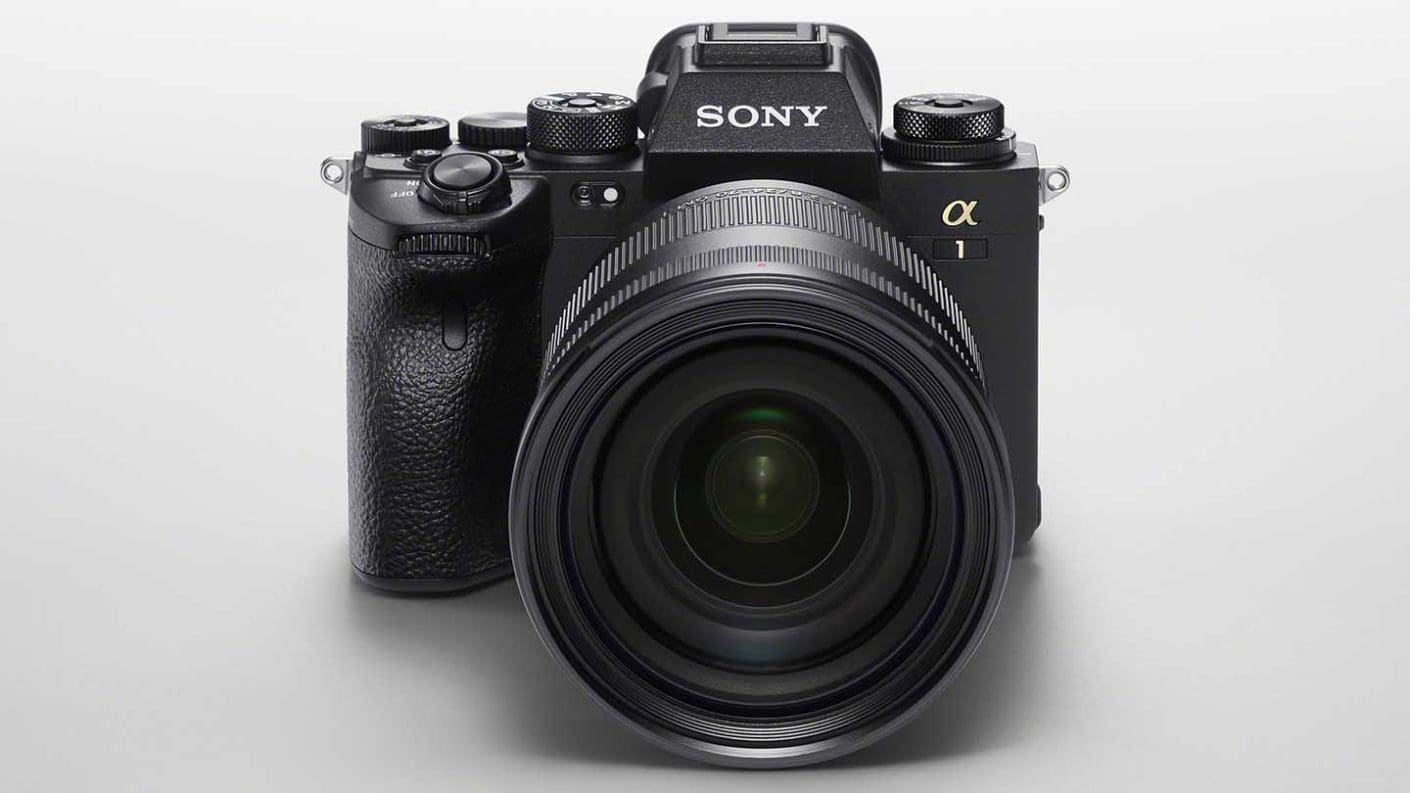
Specification
- Camera type: Full-frame mirrorless
- Announced: 26th January 2021
- Sensor: 50.1Mp full frame (35.9 x 24.0mm), Exmor RS CMOS sensor
- Lens mount: FE
- Sensitivity range: Stills: ISO 100-32000 (expandable to ISO 50 to ISO 102400) Video: ISO ISO 100-32000 (expandable to ISO 100-12800)
- Still Image format: Jpeg, HEIF, raw (Sony ARW 4.0)
- Video format & compression: XAVC S: MPEG-4 AVC/H.264, XAVC HS: MPEG-H HEVC/H.265
- 8K Video (XAVC HS): 7680 x 4320 (4:2:0, 10bit, NTSC) (Approx.): 30p(400Mbps / 200 Mbps), 24p(400Mbps / 200 Mbps), 7680 x 4320 (4:2:0, 10bit, PAL) (Approx.): 25p(400Mbps / 200 Mbps)
- 4K Video (XAVC HS): 3840 x 2160 (4:2:0, 10bit, NTSC) (Approx.): 120p (200Mbps), 60p (150Mbps / 75Mbps / 45Mbps), 24p (100Mbps / 50Mbps / 30Mbps); 3840 x 2160 (4:2:0, 10bit, PAL) (Approx.): 100p (200Mbps), 50p (150Mbps / 75Mbps / 45Mbps); 3840 x 2160 (4:2:2, 10bit, NTSC) (Approx.): 120p (280Mbps), 60p (200Mbps / 100Mbps), 24p (100Mbps / 50Mbps); 3840 x 2160 (4:2:2, 10bit, PAL) (Approx.): 100p (280Mbps), 50p (200Mbps / 100Mbps)
- 4K Video (XAVC S): 3840 x 2160 (4:2:0, 8bit, NTSC) (Approx.): 120p (200Mbps), 60p (150Mbps), 30p (100Mbps / 60Mbps), 24p (100Mbps / 60Mbps); 3840 x 2160 (4:2:0, 8bit, PAL) (Approx.): 100p (200Mbps), 50p (150Mbps), 25p (100Mbps / 60Mbps); 3840 x 2160 (4:2:2, 10bit, NTSC) (Approx.): 120p (280Mbps), 60p (200Mbps), 30p (140Mbps), 24p (100Mbps); 3840 x 2160 (4:2:2, 10bit, PAL) (Approx.): 100p (280Mbps), 50p (200Mbps), 25p (140Mbps)
- 4K Video (XAVC S-I): 3840 x 2160 (4:2:2, 10bit, NTSC) (Approx.): 60p (600Mbps), 30p (300Mbps), 24p (240Mbps); 3840 x 2160 (4:2:2, 10bit, PAL) (Approx.): 50p (500Mbps), 25p (250Mbps)
- Movie functions: Audio Level Display, Audio Rec Level, PAL/NTSC Selector, Proxy Recording (1280 x 720 (6Mbps), 1920 x 1080(9Mbps), 1920 x 1080(16Mbps)), TC/UB, Auto Slow Shutter, Gamma Disp. Assist, raw output(HDMI)
- Autofocus system: Hybrid AF with 759 phase detection points and 425 contrast detection points, Still images: Human (Right/Left Eye Select) / Animal (Right/Left Eye Select) / Bird, Movie: Human (Right/Left Eye Select), sensitive down to -4EV
- Maximum continuous shooting rate: Mechanical shutter: 10fps, Electronic shutter 30fps
- Viewfinder: 0.64-inch 9,437,184-dot EVF with 100% coverage and up to 0.9x magnification. It also offers 0.90x viewfinder magnification, 41° diagonal field of view with 25mm-high eyepoint
- Screen: 3-inch 1,440,000-dot tilting touchscreen
- Stills shutter speed range: Mechanical shutter: 1/8000-30sec plus Bulb, Electronic shutter: 1/32000-30sec plus Bulb
- Max flash sync speed (full-frame): Mechanical shutter: 1/400 sec, Electronic shutter: 1/200 sec
- Image stabilisation: 5-axis giving up to 5.5EV compensation
- Storage: Dual SD/SDHC/SDXC (UHS-I/II) & CFexpress Type A slots
- Connection ports: Sync, 3.5mm headphone, 3.5mm mic, LAN
- Battery: NP-FZ100 rechargeable Li-ion battery giving 400 shots with the viewfinder or 530 with the screen
- Dimensions (WxHxD): 128.9 x 96.9 x 80.8mm / 5 1/8 x 3 7/8 x 3 1/4 inches
- Weight (including battery & memory card): 737g / 1 lb 10.0 oz
The Alpha A1 is Sony’s most advanced camera to date, it combines a high-resolution full-frame sensor with high-speed performance. It features a new 50.1Mp full-frame stacked Exmor RS image sensor and can perform up to 120 AF/AE calculations per second.
Thanks to its impressive processing power, the Sony A1 can shoot at up to 30fps (frames per second) while its large buffer allows for sequences of up to 155 full-frame compressed RAW images or 165 full-frame JPEGs to be shot at that rate.
In addition to improved Real-time Eye AF for humans and animals, the Alpha 1 uses high-level subject recognition technology for Real-time Eye AF for birds. Algorithms also maintain the AF tracking if a sitting bird takes off or the framing changes.
The Sony A1 is the first Sony Alpha series camera to feature 8K 30p 10-bit 4:2:0 XAVC HS video recording. It’s also capable of shooting 4K 120p / 60p 10-bit 4:2:2 video and offers S-Cinetone colour. It uses 8.6K oversampling for enhanced resolution and, naturally, the 8K footage can be used for 4K editing during post-production.
The Sony A 1 has a 9.44 million dot OLED Quad-XGA electronic viewfinder, with a refresh rate of up to 240 fps, ensuring no blackout, delivering the highest resolution in its class. In addition, there’s a 3-inch 1,440,000-dot tilting touchscreen that features the revised menu arrangement and more extensive touch-control that was first seen in the Sony A7S III.
In case a resolution of 50Mp isn’t enough, the Sony A1 has Sony’s Pixel Shift Multi Shooting mode onboard to enables 16 full-resolution images to be composited.
You can order the Sony A1 from Wex Photo Video and Park Cameras in the UK and Adorama or B&H Photo Video in the USA. You can also find the latest Sony A1 offers at Amazon UK and Amazon US.
£6500
$6500For
- Excellent combination of speed and resolution
- Great range of video features including 8K video
- Superb electronic viewfinder
Against
- It takes a while to figure out the optimum settings
- Underwhelming screen specification
- Manual switching between the Eye AF subjects
OM System OM-1

Specification
- Camera type: Mirrorless
- Announced: 15th February 2022
- Sensor: 20.4Mp Four Thirds Type (17.3 x 13.0mm) CMOS
- Lens mount: Micro Four Thirds
- Sensitivity range: ISO 80-102,400
- In body stabilisation: 5-axis giving up to 7EV shutter speed compensation, 8EV when combined with lens IS
- Processing engine: TruePic X
- Autofocus system: Hybrid with 1053 cross-type phase detection points and 1053 contrast detection points
- Max continuous shooting rate: Mechanical shutter: 10fps
- Pro Capture High Mode: 120fps (with Pro lenses) or 50fps AF tracking
- Max video resolution: 4K (4096 x 2160) at 30, 25, 24p(approx. 102Mbps), 60, 50p (approx. 202Mbps), 4K (3840 x 2160) 30p, 25p, 24p (approx. 77Mbps), 60, 50p (approx. 152Mbps) all in LongGOP, Full HD (1920 x 1080) 30, 25, 24p / ALL-I(approx. 82Mbps), LongGOP(approx. 22Mbps) 60, 50p ALL-I(approx. 162Mbps, LongGOP(approx. 42Mbps)
- Video format: MOV (MPEG-4AVC/H.264)
- Viewfinder: 5.76M-dot OLED
- Screen: 3-inch 1,.62M-dot vari-angle touchscreen
- Storage: 2x SD/SDHC/SDXC (UHS-II)
- Dimensions (WxHxD): 134.8 x 91.6 x 72.7mm
- Weight: 511g (body only), 599g including battery, 1 memory card but excluding the eye cup
Like the Olympus OM-D E-M1 Mark III before it, the OM-1’s sensor has 20.4 million effective pixels but the sensor design is new as it has a stacked backside illuminated structure. This is a significant step up in sensor design and thanks to its fast readout speed, paired with the new TruePic X processing engine, it drives many of the updates brought with the OM-1 including a 1EV improvement in dynamic range and 2EV better noise control.
According to OM System, the TruePic X image processor is 3x faster than the previous processing engine. Together with the new sensor it enables a maximum continuous shooting rate of 120 fps (frames per second) in Sequential Shooting SH1 or Pro Capture SH1 mode in which the focus and exposure are fixed at the start of the sequence. In Sequential Shooting SH1 mode, this rate can be maintained for up to 92 raw or Large Fine Jpeg files.
There’s also the Sequential Shooting SH2 and Pro Capture SH2 modes which enable rates of up to 50fps with continuous autofocus (C-AF) for up to 96 raw files or 97 Large Fine Jpegs. That’s a blistering pace that should prove popular with anyone looking to capture fleeting moments.
The Sequential Shooting SH1 and SH2 modes, and the Pro Capture modes use the electronic shutter and according to OM Systems, the fast readout speed of the new sensor means that the rolling shutter effect isn’t a problem. If you want to stick with the mechanical shutter, the maximum continuous shooting rate is 10fps.
£2000
$2199.99For
- High weatherproofing
- High-speed shooting capability
- Excellent subject detection modes
Against
- Four Thirds sensor is smaller than APS-C and full-frame
- Some may wish for higher resolution
- Menus not touch-sensitive
Canon EOS-1D X Mark III
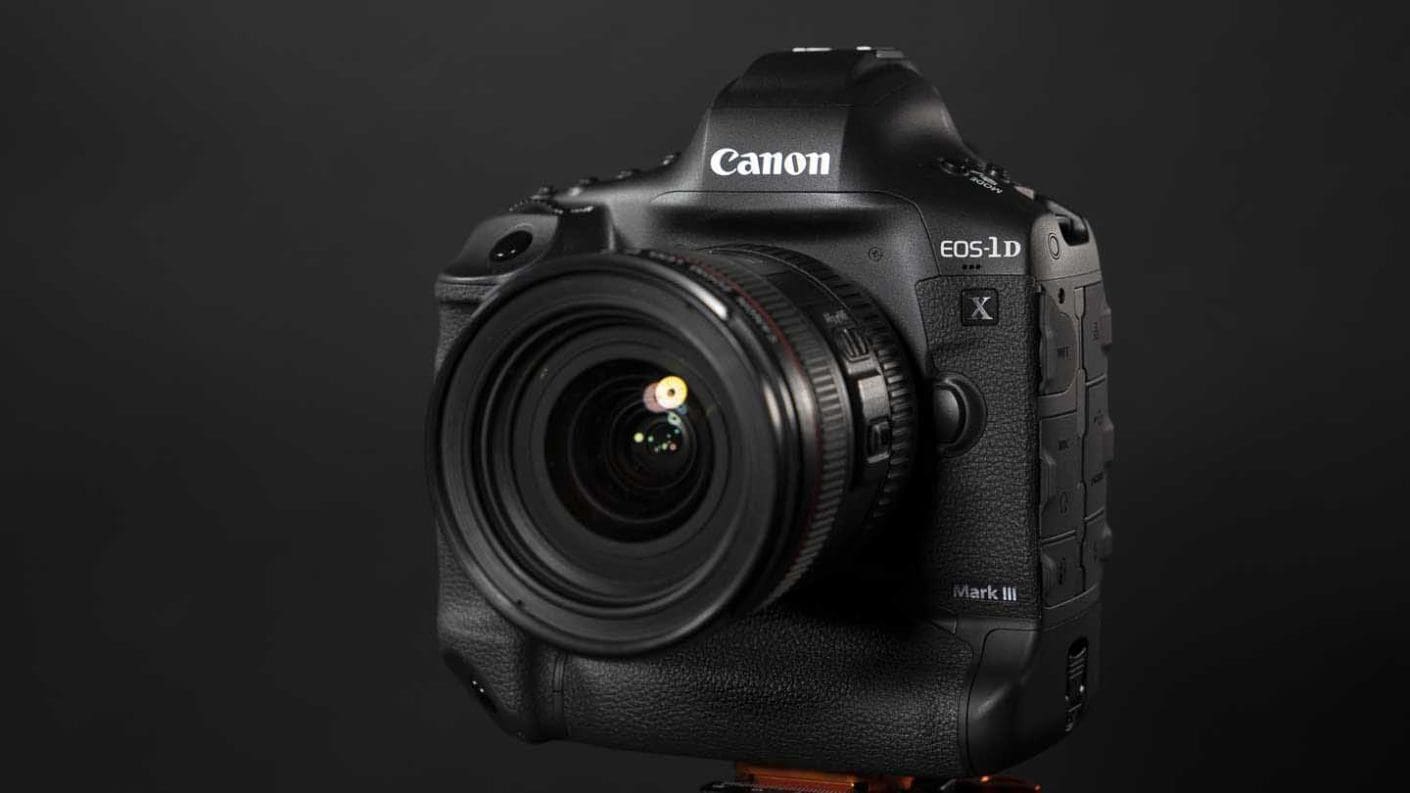
Specification
- Camera type: DSLR
- Announced: 7th January 2020
- Sensor: Full-frame (24x36mm) 20.1Mp CMOS
- Lens mount: Canon EF
- Processing engine: Digic X
- Sensitivity range: Stills: 100-102400, expandable to ISO 50-819,200, Video: ISO 100-25600, expandable to ISO 100-204,800
- Autofocus system: Viewfinder: phase detection with 191 points, 155 cross-type AF at f/4 including 1 dual cross type at f/2.8, Live View: Dual Pixel CMOS AF with Face+Tracking and 3,869 points
- Max continuous shooting rate: Viewfinder: 16ps, Live View: 20 fps with mirror locked up with exposure and AF tracking
- Max video quality: 4K raw (5496x2904) at 23.98, 24, 25, 29.97, 50, 59.94fps, 4K DCI (17:9) 4096x2160 at 23.98, 24, 25, 29.97, 50, 59.94fps intra or inter frame
- Viewfinder: Optical, pentaprism type with 100% coverage, 0.76x magnification and 20mm eyepoint
- Screen: Fixed 3.2-inch / 8.01 cm TFT with 2,100,000 dots
- Storage: Dual CFexpress 1.0 Type B
- Dimensions (W x H x D): 158 x 167.6 x 82.6mm
- Weight: 1250g body only
The Canon EOS-1D X Mark III is Canon’s flagship DSLR and its the best professional DSLR currently available.
Its AF system, which is designed with pro sports photographers in mind, is superb and the 1D X Mark III can shoot at up to 20fps to capture once in a lifetime moments.
Thanks to its 20.1Mp full-frame (36x24mm) CMOS sensor, which has a new High Detail Low-Pass Filter, and the Digic X (8) processing engine, the 1D X Mark II controls noise very well up to around ISO 51,200.
The EOS-1D X Mark III is also Canon’s most advanced interchangeable lens video camera outside the Cinema EOS series. It can shoot 4K 12-bit video with raw internal recording. It can even record raw and MP4 video simultaneously to two separate memory cards.
In addition, 4K video can be video can be oversampled at 5.5K (5472×2886) and recorded as 12-bit CRM files highly-detailed footage.
As a twin-gripped camera, the Canon EOS-1D X Mark III is big and heavy but it’s also very robust.
Find the latest deals on the Canon EOS-1D X Mark III at Amazon UK and Amazon US.
£6499
$6499For
- 16/20fps continuous shooting with a massive burst depth
- Excellent AF system
- Great new Smart Controllers
Against
- Huge price
- Fixed screen is frustrating in Live View and video mode
- Big and heavy

